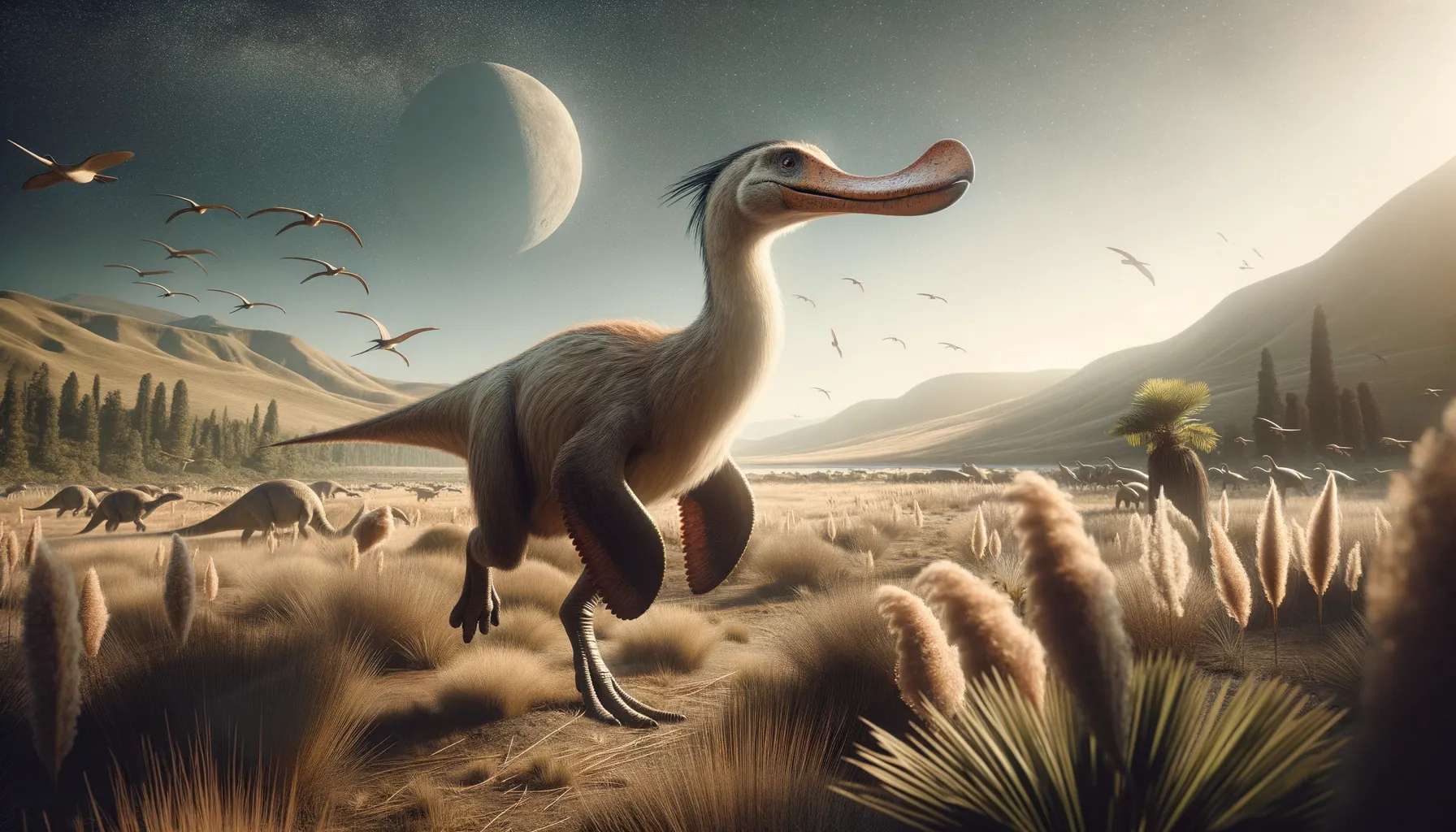
Adelolophus
Explore the mysteries of the Cretaceous!
Period
Cretaceous
Length
Around 30 feet long.
Height
Approximately 10 feet tall.
Weight
Roughly 2 to 3 tons.
Adelolophus was a duck-billed dinosaur that lived during the late Cretaceous period. It was a herbivore and likely roamed in herds across the plains, using its beak to snip vegetation. Its known features include a small crest on its head, suggesting social or communication functions. This dinosaur adds to our understanding of evolution and diversity among duck-billed dinosaurs, particularly in North America.
Diet
Adelolophus was herbivorous, primarily feeding on leaves, ferns, and other low-lying vegetation. Its beak was adapted for cropping plants, and it likely had cheek teeth to grind up its food.
Hunting
As a herbivore, Adelolophus did not hunt for food. Instead, it might have foraged in groups for safety and navigated through its habitat to find abundant plant resources.
Environmental challenges
Adelolophus faced predators that roamed its ecosystem, compelling these dinosaurs to be vigilant and possibly rely on herd protection. Changes in plant availability due to climate fluctuations might have affected its food resources. Competition with other herbivore species could have driven them to adapt their feeding strategies and ranges.
Speed
Likely moderate, suitable for a herbivore.
Lifespan
Estimated to be around 20 to 30 years.
First discovery
Uncovered in Utah, USA, in the 1990s.
Fun Facts
- Adelolophus is a genus of hadrosaur, a type of duck-billed dinosaur, known for its unique crest and beak-like snout.
- The name Adelolophus means 'unknown crest,' referring to its distinctive head ornamentation that still intrigues scientists.
- Fossils of Adelolophus have been found in the Cedar Mountain Formation in Utah, making it one of the few hadrosaurs from this region during its time period.
- Adelolophus lived during the early Cretaceous period, around 105 million years ago, when North America was a warm, lush landscape.
- This dinosaur was likely a herbivore, feeding on plants and using its specialized teeth to grind tough vegetation.
- Adelolophus's exact size is unknown, but like many hadrosaurs, it probably grew to be several meters long and weighed a few tons.
- Researchers believe Adelolophus might have lived in herds, using its crest for communication either visually or through sound.
Growth and Development
Adelolophus juveniles would be cared for in herds, receiving protection from older group members. They would slowly develop their distinct crests, essential for integration and communication within their social structures. Growth was likely steady, reaching maturity in a timeline similar to other large herbivores.
Habitat
Adelolophus lived in environments with plenty of vegetation, such as forests or floodplains. These regions provided ample food and water, essential for sustaining its large herds. Seasonal changes would have seen migrations in search of resources.
Interaction with other species
Adelolophus likely coexisted with a variety of other dinosaurs, both herbivores, and carnivores. It may have competed with similar herbivores for resources and had to be cautious of predatory species. Symbiotic relationships with smaller animals, such as those that fed on insects, could have occurred.
Natural lifespan
Their natural lifespan might have extended up to 30 years.
Reproduction
Adelolophus likely laid eggs in nests, possibly communal. Parental care was probable, with adults protecting eggs and young. Social structures within herds would help nurture developing offspring together.
Social behaviour
Adelolophus likely exhibited strong social behaviors, living and migrating in large herds for protection and community. Communication may have been facilitated by vocalizations, aided by its small cranial crest and echoing abilities within the group.
Fossil locations
The fossils of Adelolophus have been discovered in North America, primarily in the Western United States. These remains provide important insight into the diverse ecosystems of the Cretaceous period. Ongoing excavations continue to reveal more about their anatomy and lifestyle.
